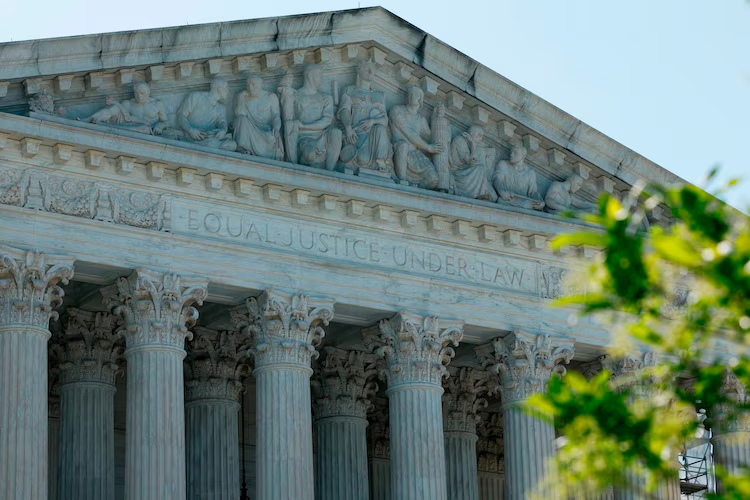The U.S. Supreme Court on Friday invalidated a Trump-era ban on bump stocks, ruling the Bureau of Alcohol, Tobacco, Firearms and Explosives wrongly classified firearms equipped with a bump stock as machine guns.
The 6-3 opinion was authored by Justice Clarence Thomas. The court’s three liberal justices, led by Justice Sonia Sotomayor, dissented.
The court ruled a semiautomatic rifle equipped with a bump stock is not a “machinegun” under federal law “because it does not fire more than one shot ‘by a single function of the trigger.'”
“This case asks whether a bump stock — an accessory for a semiautomatic rifle that allows the shooter to rapidly reengage the trigger (and therefore achieve a high rate of fire) — converts the rifle into a ‘machinegun.’ We hold that it does not,” Thomas wrote.
More than 700,000 bump stocks were sold since 2009 after the Obama-era ATF approved the manufacture and sale. The bump stock, which is non-mechanical, can simulate an automatic weapon, firing 400-800 rounds per minute. A fully automatic weapon, such as a M16 rifle, shoots 700-950 rounds per minute.
The ATF ban on the accessory was created in the wake of the deadliest mass shootings in U.S. history when a gunman opened fire at Las Vegas music festival in 2017. Fifty-eight people were killed and hundreds of others wounded.
Sotomayor, in her dissent, noted the gunman in that tragedy used the device to create rapid fire.
“When I see a bird that walks like a duck, swims like a duck, and quacks like a duck, I call that bird a duck,” Sotomayor wrote. “A bump-stock-equipped semiautomatic rifle fires ‘automatically more than one shot, without manual reloading, by a single function of the trigger.'”
Sotomayor added, “Today’s decision to reject that ordinary understanding will have deadly consequences. The majority’s artificially narrow definition hamstrings the Government’s efforts to keep machineguns from gunmen like the Las Vegas shooter.”
Bump stock inventor Jeremiah Cottle, who previously spoke to ABC News about his controversial firearm accessory, called the court’s decision a “good ruling” and personal “vindication.”
“I think we have a violence problem in this country. I don’t think we have a gun problem,” Cottle said. “I think it’s a balance problem. And I think to blame it on an inanimate object is irresponsible.”
Plaintiff Michael Cargill, a Texas gun store owner, told ABC News the case was “not just about firearms” but government overreach.
“They cannot walk into my house and tell me something that I owned, that I purchased, all of a sudden, years later, it’s illegal and they decide to ban it,” Cargill said. “They can’t do that.”
Gun control advocates, on the other hand, decried the ruling.
“This decision by the high court is dangerous and wrong. The ATF must be undeterred in continuing to aggressively enforce our nation’s gun laws,” Eric Tirschwell, the executive director of Everytown Law, said in a statement.
President Joe Biden, in the wake of the ruling, issued a statement calling on Congress to ban bump stocks as well as assault weapons.
But given the narrow partisan divide on Capitol Hill, the influence of the gun lobby and election-year campaign politics — immediate legislative action in response to the court’s ruling is unlikely, even though a ban did have some bipartisan support in 2017.
Trump’s campaign said the court’s decision “should be respected” and that the “right to keep and bear arms has never been more critical.” The statement, however, did not address the fact that the ATF imposed the ban during his administration.




